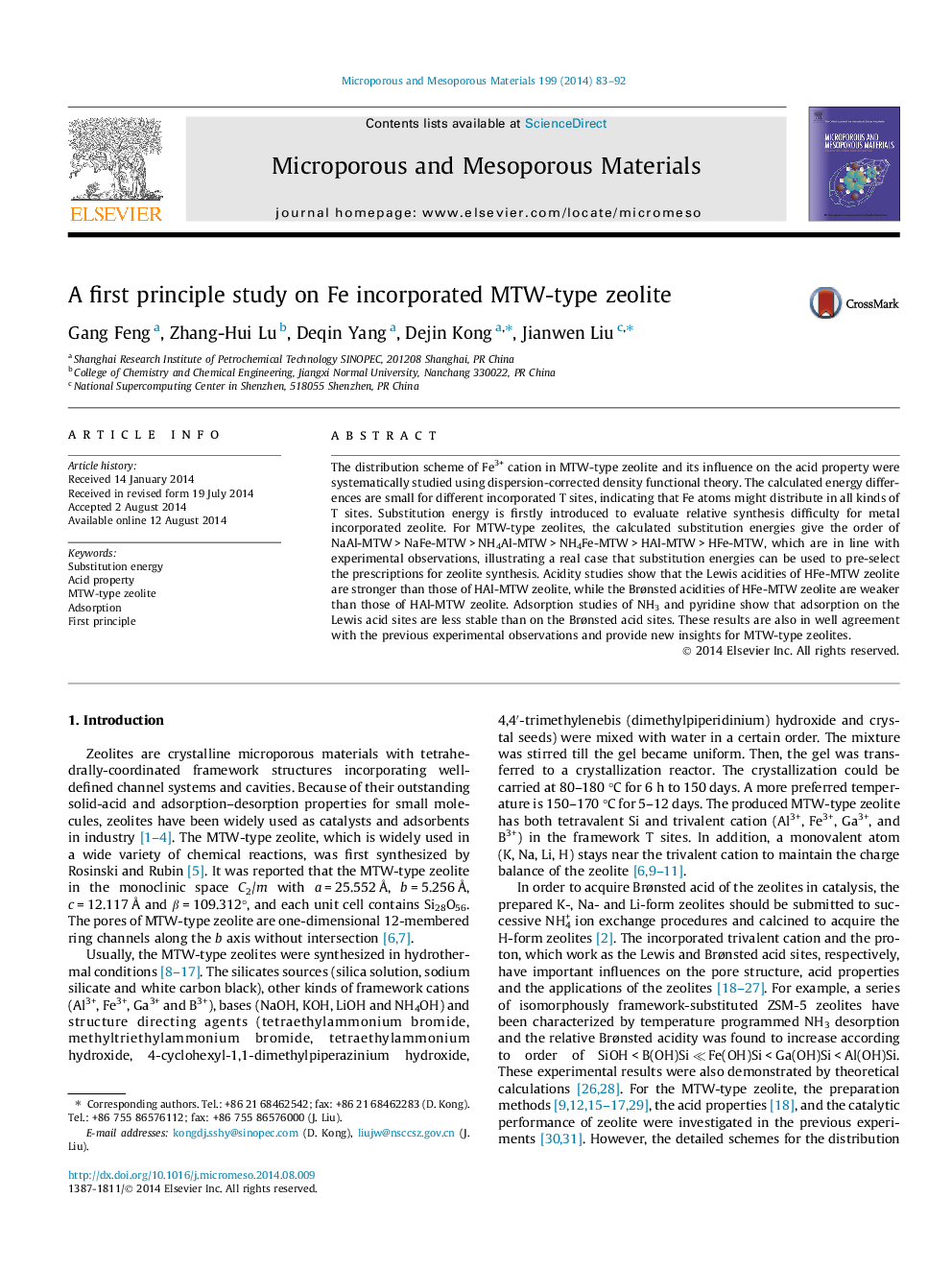| Article ID | Journal | Published Year | Pages | File Type |
|---|---|---|---|---|
| 72975 | Microporous and Mesoporous Materials | 2014 | 10 Pages |
•Substitution energy is introduced for zeolite synthesis prescription evaluation.•MTW-type zeolites synthesis become difficulty: NaAl-MTW < NaFe-MTW < NH4Al-MTW < NH4Fe-MTW < HAl-MTW < HFe-MTW.•NH3 and pyridine adsorb on the Brønsted sites stronger than on the Lewis sites in Fe-MTW.•Lewis acidity: HFe-MTW > HAl-MTW, Brønsted acidity: HFe-MTW < HAl-MTW.
The distribution scheme of Fe3+ cation in MTW-type zeolite and its influence on the acid property were systematically studied using dispersion-corrected density functional theory. The calculated energy differences are small for different incorporated T sites, indicating that Fe atoms might distribute in all kinds of T sites. Substitution energy is firstly introduced to evaluate relative synthesis difficulty for metal incorporated zeolite. For MTW-type zeolites, the calculated substitution energies give the order of NaAl-MTW > NaFe-MTW > NH4Al-MTW > NH4Fe-MTW > HAl-MTW > HFe-MTW, which are in line with experimental observations, illustrating a real case that substitution energies can be used to pre-select the prescriptions for zeolite synthesis. Acidity studies show that the Lewis acidities of HFe-MTW zeolite are stronger than those of HAl-MTW zeolite, while the Brønsted acidities of HFe-MTW zeolite are weaker than those of HAl-MTW zeolite. Adsorption studies of NH3 and pyridine show that adsorption on the Lewis acid sites are less stable than on the Brønsted acid sites. These results are also in well agreement with the previous experimental observations and provide new insights for MTW-type zeolites.
Graphical abstractFigure optionsDownload full-size imageDownload as PowerPoint slide
